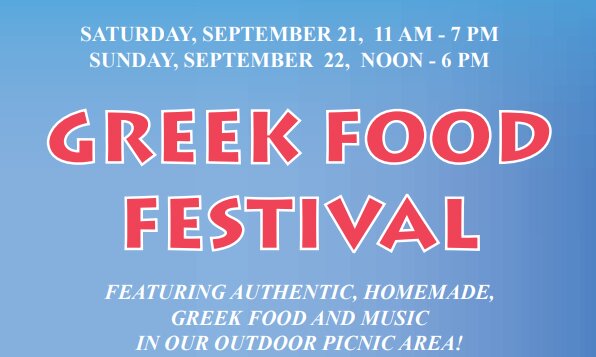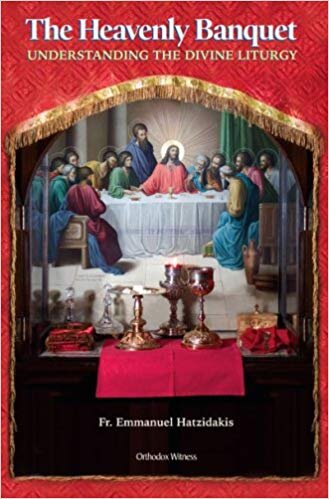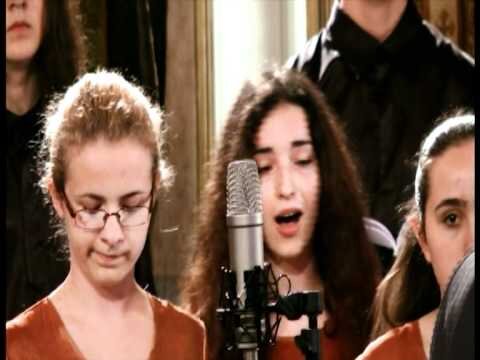Our mission is to welcome all people to discover and live the Orthodox Christian spiritual life and to grow in holiness through repentance and love for Jesus Christ and one another.
Our services offer the ancient way of beauty, reverence and worship of the Holy Trinity: the Father, the Son and the Holy Spirit, One God, according to the Apostolic Faith and Holy Tradition we received from Christ himself (1 Corinthians 11:23).
Our parish was founded in 1948 by Greek Orthodox immigrants. We are a part of the Metropolis of San Francisco of the Greek Orthodox Archdiocese of America. In case you're wondering, you don't have to be Greek to be Orthodox! There are Orthodox Christians all over the world from many different cultures. This universality of the Orthodox faith is beautifully represented in our own parish as our members hail from a variety of ethnic backgrounds including Greeks, Assyrians, Hispanics, Arabs, Ethiopian, African-American, Russians, Philippine, and more. Our services are in English with some hymns chanted in the original Greek of the composition. The scripture readings are proclaimed in the original Biblical Greek and English.
We invite you to visit our parish!
Please fill out our visitor form and tell us about yourself and the date of your visit so we can properly welcome you.
What is the Orthodox Church?
The Orthodox Church is the same Church across the globe, and across time, preaching the Gospel, teaching the Lord’s commandments, and worshiping God in spirit and in Truth just as we have since 33 AD. Everything in our worship, including the words we use, are based on the Holy Bible and the practice of the early Church we read about in the New Testament. Our worship, like that of the ancient Jews and early Christians, is liturgical. In fact, our newest worship service is 1,300 years old!
What does the "Greek" in Greek Orthodox refer to?
The ancient Christian empire of Byzantium was established by the Roman Emperor Constantine (our patron saint) when he made it the new capital of the Roman Empire in 330 AD and called it “New Rome.” The Orthodox Christian citizens of the Byzantine empire considered themselves Romans. When the Great Schism occurred between the Pope in Rome and the Patriarch in Constantinople in 1054 AD, it led to a change in how the world began to refer to their respective Churches. Geographically, both Churches were part of what was known as the “Greco-Roman” world. However, the area governed by the Byzantine Empire, which was east of the Mediterranean, began to be referred to as the "Greek East" and the other began to be called "the Roman West." For this reason the term "Greek Orthodox" began to be used to identify the Orthodox Church. Today, Orthodox Churches also self-identify according to their geographic roots in traditional Orthodox lands such as Jerusalem, Antiochian, Russian, Serbian, etc. and to distinguish themselves from non-Orthodox churches, i.e. Catholic, Protestant. For this reason, the term “Greek Orthodox” is interchangeable with Roum Orthodox, Eastern Orthodox, or just plain Orthodox.
What to expect when you visit an Orthodox Church
To start with, we want you to know at least this much:
You are welcome here. We are always honored to have visitors join us for prayer and worship.
You won’t be asked to do anything which would make you uncomfortable.
We don’t expect visitors to contribute anything to the financial support of our parish or our programs.
Our children worship with us. If you have young children, they are welcome here, too. If you need to step to the back of the Church with your child for any reason, you are not disturbing us or the priest. We expect Christian children to be raised in the Church and to do that, they have to be in the Church.
All of our facilities are handicap accessible. If you need any assistance at all, please let us know. We are here to be of service to you.
If you are an Orthodox Christian, and you have prepared yourself to receive Holy Communion according to your Spiritual Father’s direction, be sure to introduce yourself to our priest before the service. You are welcome to approach the chalice for Holy Communion. If you are not Orthodox, you will not be able to participate in Holy Communion but you may receive a piece of blessed bread at the end of the service.
We are part of the worldwide Orthodox Church – the oldest Christian Church in the world. We are the Church you read about in the New Testament. This is not a theological statement, it is an historical one. And in every part of the world, there are Orthodox Christians, Churches and missions: in traditionally Orthodox countries like the Holy Land, Greece, Russia, Romania, Serbia, the Middle East, and India but also in Japan, China, the Philippines, throughout Europe including Germany, France, Poland, Finland, across the British Isles, throughout the African continent including Ghana, Nigeria, Tanzania, Uganda, South Africa, and across Central and South America.
10 Things you should know before visiting an Orthodox Church
There is movement before and during worship
In an Orthodox church there is only one Eucharistic service (Divine Liturgy) per Sunday, and it is preceded by an hour service of Matins or Orthros (8:30 am). One begins as soon as the previous ends. Matins (Orthros) is a preliminary service celebrating the good news of Resurrection of Christ which make the liturgy possible that follows.
Orthodox worshipers arrive at any point from the beginning of Matins through the early part of the Liturgy.
2. We Stand When We Pray
In the Orthodox tradition, the faithful stand up for nearly the entire service. The reason for this is that we understand worship to be work. Sitting is a form of rest. We believe that when in the presence of God we should all stand. If you find the amount of standing too challenging you’re welcome to sit at any time.
The liturgy at Sts. Constantine and Helen begins at 10:00 am. By 10:30 am we hear the reading of the Epistle and then the Gospel lesson for the day is read. Fr. Ninos will offer the sermon after the Gospel lesson, according to the ancient practice of the Church. The liturgy then continues until its climax: Holy Communion is offered to those who have prepared themselves with prayer, fasting, and having gone to Confession. Following the announcements, the parishioners leave their seats and come up to be greeted by the priest and receive a piece of blessed bread called antidoron, meaning "instead of the gift." The gift being Holy Communion. This bread was traditionally given to those who for various reasons where unable to receive Holy Communion.
3. People Make the Sign of the Cross
We sign ourselves whenever the Trinity is invoked, whenever we venerate the cross or an icon, and on many other occasions in the course of the Liturgy. People however, aren’t expected to do everything the same way. On first entering the church, the faithful may come up to an icon, crossing themselves and bowing with right hand to the floor, then kiss the icon, then make one more bow. We make the sign of the cross on our bodies to receive God's blessing, grace and protection from evil.
4. Orthodox People Venerate
When we first come into the church, we kiss the icons. You’ll also notice that some kiss the chalice, some kiss or touch the edge of the priest’s vestment as he passes by, the acolytes (altar boys) kiss his hand when they give him the censer, and we all line up to kiss the priest’s hand at the end of the service as we received the blessed bread. When we talk about “venerating” something we usually mean crossing ourselves and kissing it.
The reason for kissing the hand of the priest has to do with our understanding that during the liturgy the hands of the priest are the hands that give out the Holy Body and Holy Blood of Jesus Christ (Communion). It is also the laying on of hands that ordinations are done by the bishops. The laying on of hands goes back to the Apostles in the Orthodox Church.
We greet each other before we take communion (“Greet one another with a kiss of love,” 1 Peter 5:14). The usual greeting is “Christ is in our midst” and response, “He is and always shall be.” Don’t worry if you forget what to say. Some of the faithful greet each other by shaking hands, while others kiss each other on each cheek. This greeting or “kiss of peace” is a liturgical act, a sign of mystical unity.
5. Blessed bread and consecrated bread.
Only Orthodox Christians may receive communion, but everyone may have some of the blessed bread offered at the conclusion of the liturgy. As we file past the priest, we come to an altar boy holding the basket of blessed bread. People will take portions for themselves and for visitors and non-Orthodox friends around them. If someone hands you a piece of blessed bread, do not panic; it is not the eucharistic Body. It is a sign of fellowship.
Visitors should not be offended that they are not allowed to receive communion. It is important to know that communion is not given out as a means of hospitality. Anyone who is not Orthodox may receive holy communion if they wish to attend classes and convert to Orthodox Christianity. Orthodox believe that receiving communion is broader than me-and-Jesus; it acknowledges faith in historic Orthodox doctrine, obedience to a particular Orthodox bishop, and a commitment to a particular Orthodox worshipping community. There’s nothing exclusive about this; everyone is invited to make this commitment to the Orthodox Church. But the Eucharist is the Church’s treasure, and it is reserved for those who have united themselves with the Church, and have full knowledge of what holy communion is.
We also handle the Holy Eucharist with more gravity than those from other groups or denominations, further explaining why we guard it from common access. We believe it has been changed from ordinary bread and wine to the Body and Blood of Christ. Holy communion is a sacrament of the church, and not a symbolic gesture or right of passage. We ourselves do not receive communion unless we are making regular confession of our sins to a priest and are at peace with other communicants. We fast from all food and drink – yes, even a morning cup of coffee – from midnight the night before communion.
6. How do we greet the clergy?
The role of the priest is that of a spiritual father, preacher of the gospel, and the one who offers the sacraments. Part of his role is to continue the earthly ministry that St. Paul brought to the people. He is referred to in respect as father, because he is both a servant of the Lord, and also called to be the leader of the congregation. Just as St. Paul referred to himself as father of his flock in 1 Corinthians 4:14-15, the faithful refer to him in the same way as a way to honor the position of the priesthood. His wife also holds a special role as parish mother, and she gets a title too “Presbytera” (Greek), which means “priest’s wife.”
7. Hymnology That Draws Us To Pray
At Sts. Constantine and Helen, we do congregational singing, led by two or three chanters. The worship is conducted in English. You can open up the hymnal book in the pew and read or sing along. Some hymns may be chanted in Greek and will appear in the hymnal book written phonetically with an English translation.
8. The Virgin Mary
A constant feature of Orthodox worship is veneration of the Virgin Mary, the “champion leader” of all Christians. We often address her as “Theotokos,” which means “Birthgiver of God.” In providing the physical means for God to become man, therefore she had a pivotal role in our salvation.
We honor her, as Scripture foretold (“All generations will call me blessed,” Luke 1:48). When we sing “Through the intercession of the Theotokos, Savior, save us,” we don’t mean that she grants us eternal salvation, but that we seek her prayers for our protection and growth in faith. Just as we ask for each other’s prayers, we ask for the prayers of Mary and other saints as well. They’re not dead, after all, just departed to the other side. Icons surround us to remind us of all the saints who are joining us invisibly in worship. One reference to the saints surrounding us Hebrews 12:1 – “Therefore, since we are surrounded by such a great cloud of witnesses…”
9. The three doors.
Every Orthodox church will have an iconostasis before its altar. “Iconostasis” means “icon-stand”, and it can be as simple as a large image of Christ on the right and a corresponding image of the Virgin and Child on the left. The basic set-up of two large icons creates, if you use your imagination, three doors. The central one, in front of the altar itself, is called the “Holy Doors” or “Royal Doors,” because there the King of Glory comes out to the congregation in the Eucharist. Only the priest and deacons, who distribute the Eucharist, use the Holy Doors.
The openings on the other sides of the icons, if there is a complete iconostasis, have doors with icons of angels; they are termed the “Deacon’s Doors.” Altar boys and others with business behind the altar use these, although no one is to go through any of the doors without an appropriate reason.
10. How does a “non-Greek” fit in?
There are about 6 million Orthodox in North America and 350 million in the world, making Orthodoxy the second-largest Christian community. Most are NOT Greek. Orthodox throughout the world hold unanimously to the fundamental Christian doctrines taught by the Apostles and handed down by their successors, the bishops, throughout the centuries. One could attribute this unity to historical accident. We would attribute it to the Holy Spirit. Being Greek ethnically is not a requirement to be Greek Orthodox, just as someone can be Roman Catholic without being Roman. Because only Greek was spoken for approximately the first 300 years in the Christian church, the original church was sometimes referred to as the Greek church. It is the rule of the Orthodox Church to speak the language of the local people, therefore at Sts. Constantine and Helen we speak English and some parishioners speak Greek. Our priest is a native speaker of Assyrian-Aramaic, conversational German and Greek and of course English.
Currently the largest American jurisdictions are the Greek Orthodox Archdiocese, The Orthodox Church in America (Russian roots), and the Antiochian Archdiocese (Aramaic and Arabic roots). The liturgy is substantially the same in all, though there may be variation in language used and type of music.
Orthodoxy seems startlingly different at first, but as the weeks go by it gets to be less so. It will begin to feel more and more like home, and will gradually draw you into your true home, the Kingdom of God. We hope that your first visit to our Orthodox church will be enjoyable. Welcome Home!
We invite you to visit our parish!
Please fill out our visitor form and tell us about yourself and the date of your visit so we can properly welcome you.




